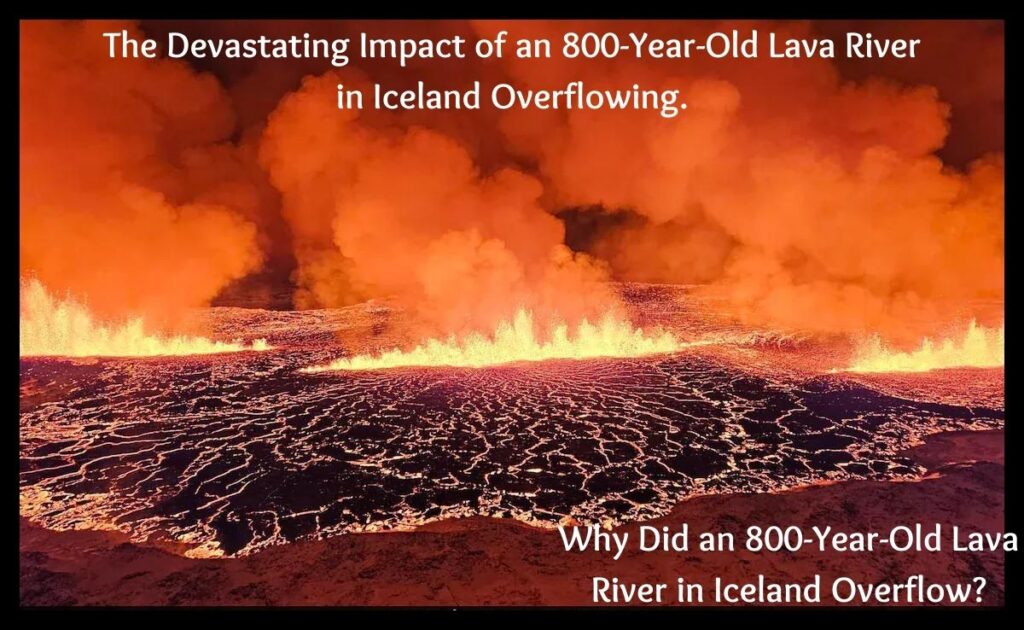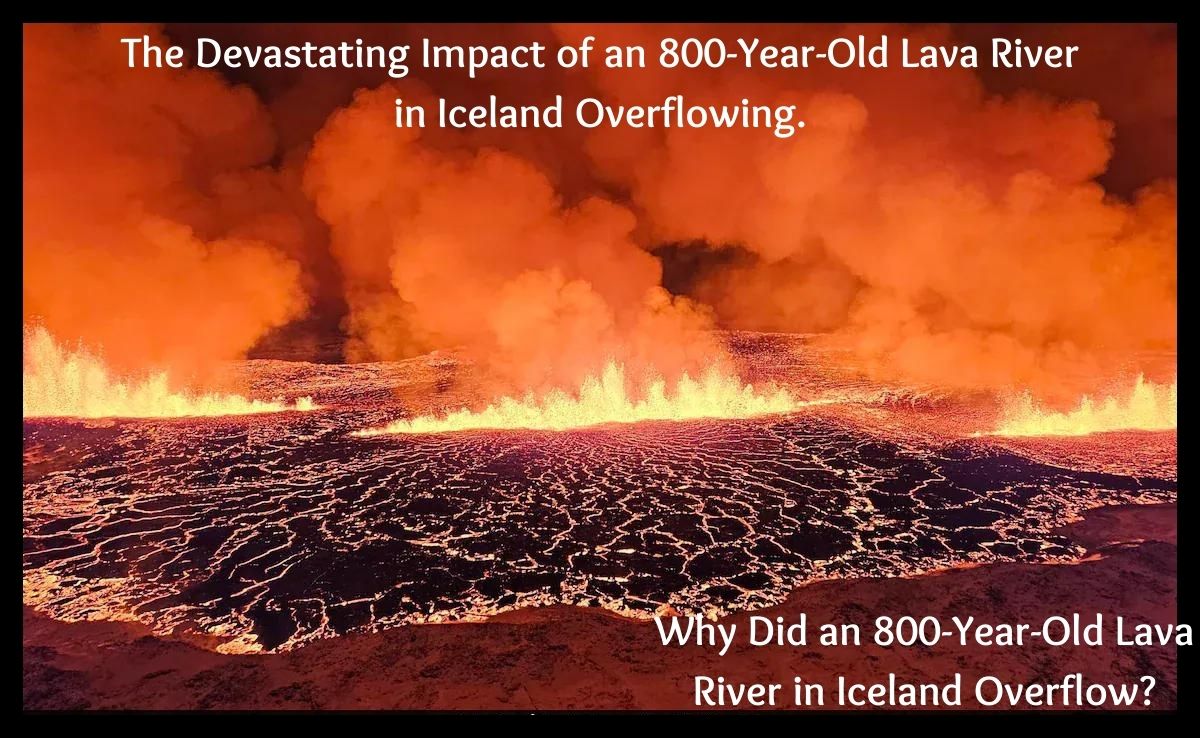. 800-Year-Old Lava River in Iceland Overflows:

In recent news, an 800-year-old lava river in Iceland has overflowed, causing concern among locals and authorities. The lava river, known as Geldingadalir, has been active since March 2021 when it first erupted in the Reykjanes Peninsula. The eruption marked the first in this particular area in over 800 years, making it a significant event for geologists and volcanologists.
The overflow of the lava river has led to increased volcanic activity and the creation of new lava flows. This has prompted authorities to monitor the situation closely to ensure the safety of nearby residents and tourists. The eruption has also attracted visitors who are eager to witness this rare natural phenomenon up close.
The lava flow from Geldingadalir has been steadily increasing, with lava fountains reaching heights of up to 300 meters at times. The molten rock has covered a significant area, created a surreal landscape of hardened lava fields and steamed vents. Despite the spectacle, authorities are urging caution and have implemented safety measures to prevent accidents or injuries.
Overall, the overflow of the 800-year-old lava river in Iceland serves as a reminder of the dynamic and unpredictable nature of volcanic activity in this region. It highlights the need for ongoing monitoring and preparedness to mitigate any potential risks associated with such events.
* Reason Behind Lava River Overflow in Iceland:
In Iceland, the overflow of lava rivers can be attributed to various geological factors. One of the primary reasons for lava river overflow is the viscosity of the lava itself. The viscosity of lava is influenced by its temperature, composition, and gas content. Lava with higher viscosity tends to flow more slowly and can lead to the buildup of pressure within the lava flow. When this pressure exceeds the resistance offered by the surrounding terrain, it can result in an overflow of the lava river.
Another factor contributing to lava river overflow is the topography of the area. Steep slopes or narrow channels can accelerate the flow of lava, increasing the likelihood of overflow. Additionally, obstacles such as rocks or debris in the path of the lava flow can cause redirection and lead to overflow in certain areas.
Furthermore, the volume of lava being erupted plays a significant role in determining whether a lava river will overflow. If the rate of eruption exceeds the capacity of the existing channels to contain the lava, overflow becomes more probable. This can be influenced by factors such as increased volcanic activity or changes in magma supply.
Human activities, such as construction or alteration of natural drainage patterns, can also contribute to lava river overflow in Iceland. By disrupting natural flow paths or creating barriers that impede the movement of lava, humans can inadvertently trigger overflows in certain areas.
The western Reykjanes peninsula, which had slumbered for 800 years without an eruption, is now experiencing a dramatic reawakening of volcanic activity.
The latest fissure, emerging just hours before a pivotal study was published in the journal Science, has led to the evacuation of the village and raised concerns about the future of the region.
Freysteinn Sigmundsson, from the University of Iceland’s Nordic Volcanological Centre, has been at the forefront of this research. His team’s analysis revealed that on November 10, over a span of six hours, a dyke formed underground, stretching 15 kilometers long and four kilometers high, yet only a few meters wide.
In summary, the overflow of lava rivers in Iceland is a complex phenomenon influenced by factors such as lava viscosity, topography, eruption volume, and human intervention. Understanding these factors is crucial for predicting and mitigating the impacts of lava river overflow events.
